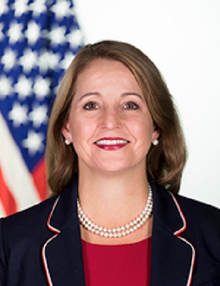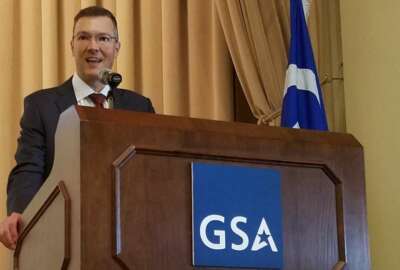

The Trump administration plans to take a closer look at recruiting entry-level talent and retraining the existing IT workforce in the coming months as part of its...
The Trump administration plans to take a closer look at recruiting entry-level talent and retraining the existing IT workforce in the coming months as part of its strategy to stand up its IT modernization agenda.
Federal Chief Information Officer Suzette Kent, speaking Tuesday at Symantec’s Government Symposium in Washington, said her office is “laser focused” on identifying places where the cybersecurity talent gap is most severe.
“We have a lot of gaps in some of the entry-level positions, so we’re putting programs in place to address that — both how we bring people in faster, and how we create opportunities to reskill individuals who are in closely adjacent sets of activities, but they have the right aptitudes and skills to be effective in some of those cyber roles,” Kent said.

Kent said her office expects to have an update on those programs in the next couple of months, and added that the upcoming initiatives demonstrate the administration’s understanding that in order to get its IT modernization agenda, it needs to invest in the IT workforce.
“We’re going to continue to make significant investments in the federal workforce in this space, from entry [level] all the way through our lead executives,” she said.
Earlier this month, Margaret Weichert, the acting director of the Office of Personnel Management, and the Office of Management and Budget’s deputy director for management, said the administration has gotten stuck on the workforce “gear” of the President’s Management Agenda.
On average, it takes about 106 days agencies to fill a vacant position — a statistic that Kent said “makes me shudder.” However, agencies could soon expedite that process.
OPM issued a proposed rule on Monday that would soon give agency heads direct hiring authority for hard-to-fill IT positions.
In addition, Kent said the administration expects to issue guidance to agencies to help them standardize expectations for the IT workforce. She said the administration also is looking to increase the mobility of IT talent across agencies.
“When we talk to people about why they’re leaving, and I’m saying this from a federal government perspective, they want continuous challenge. They want continuous challenge and opportunity to continue to expand their own careers and their own leadership in this space,” Kent said.
Earlier this month, an ACT-IAC and MeriTalk report found that in a survey of 300 agency finance, IT and procurement executives, nearly 85 percent agreed that IT modernization is key to their mission, but only 28 said they were confident in how their agencies were preparing their employees for IT modernization.
Ahead of another round of budget negotiations in December, Kent said she’s trying to ensure that IT workforce investments aren’t at risk of getting cut.
“It can’t be pulled out, and if we’re going to sustain … our environment of innovation, and the fact that we’re never done,” she said. “It is a constant battle, and it’s constantly changing. We have to have that level of investment in the workforce.”
In building a talent pipeline for agencies, Kent said the administration is looking at ways to rotate private-sector talent into short-term stints of federal service.
“The opportunity that we have right now going forward is how we look at risk, and how we deploy different individuals, definitely in the federal government, but also how we continue that dialogue with private sector, because we are fighting for the same people. Both sides being very committed to that movement back-and-forth,” Kent said.
The Trump administration has already moved in this direction by standing up Centers of Excellence at the Agriculture Department and the Department of Housing and Urban Affairs.
The Homeland Security Department, through its National Risk Management Center, also serves as a good model for what the administration would like to achieve, Kent said.
“There are things that are being done across the agencies, particularly being led by DHS on the federal government side, where we’re trying to bring the depth in cyber and the depth in specific industries together more closely and increase the understanding of what goes on in specific industries, but more importantly the collective dialogue around the risk across the industry,” Kent said.
Copyright © 2025 Federal News Network. All rights reserved. This website is not intended for users located within the European Economic Area.
Jory Heckman is a reporter at Federal News Network covering U.S. Postal Service, IRS, big data and technology issues.
Follow @jheckmanWFED


